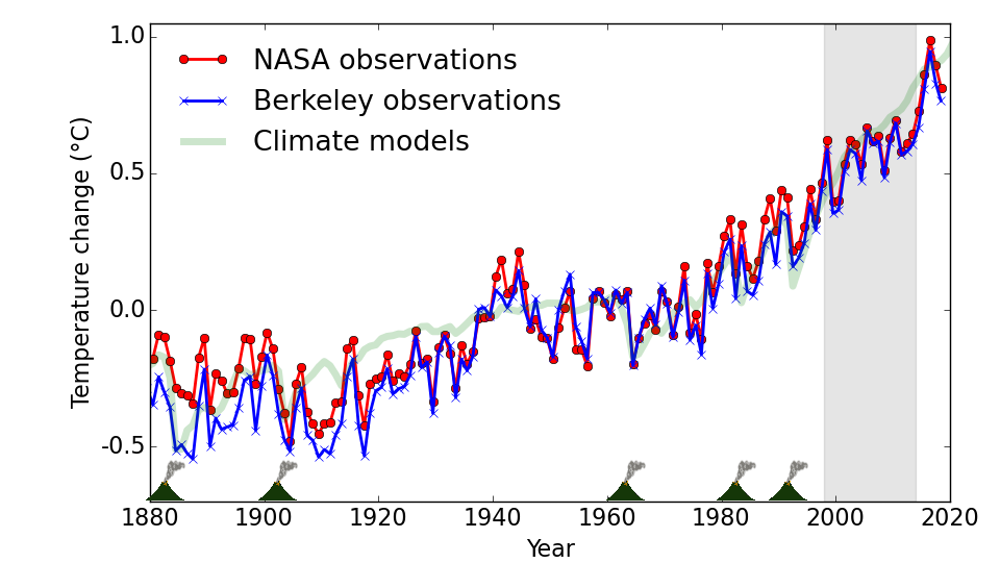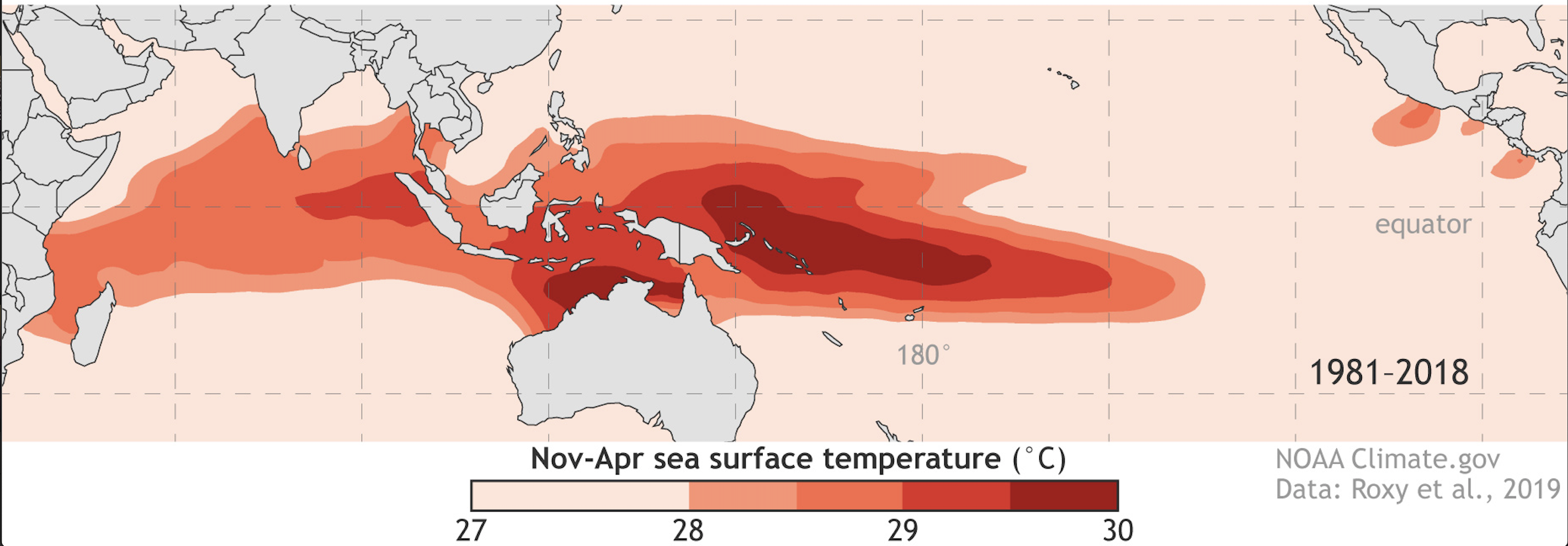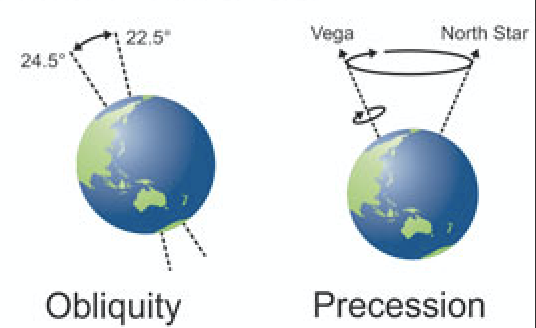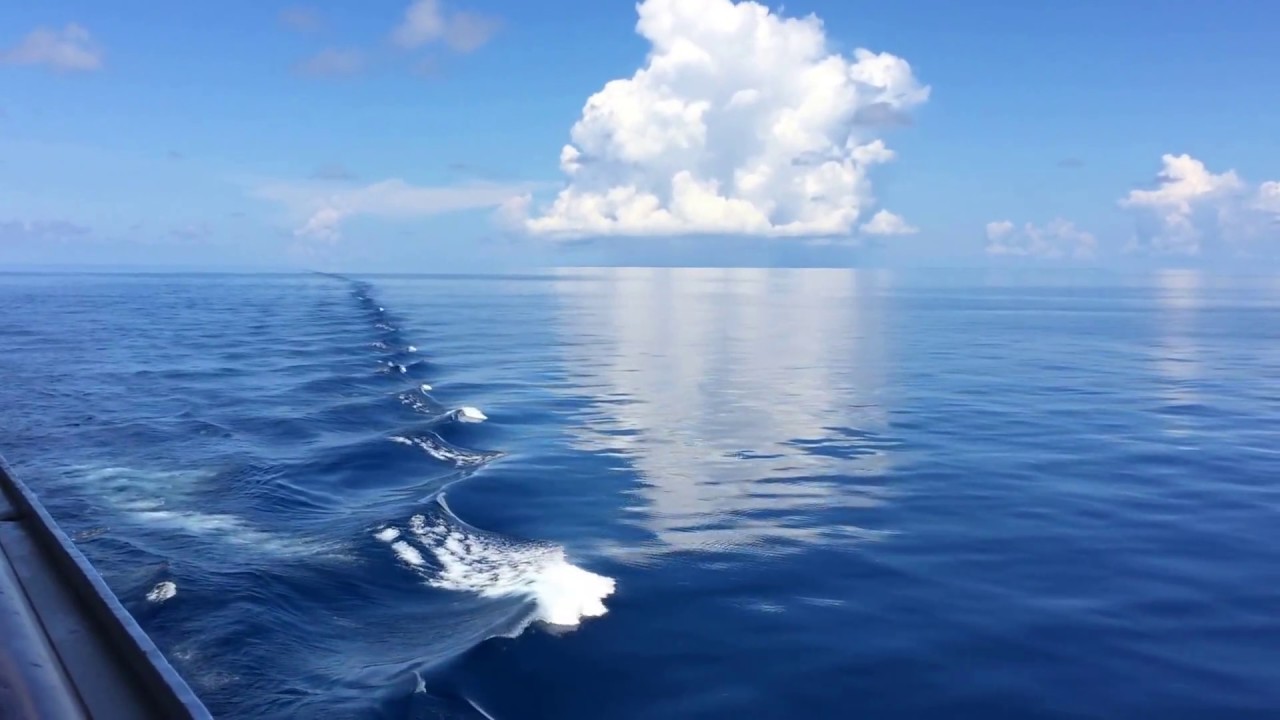Global Warming Took a Hiatus
In the early 2000s, the public was just beginning to actively engage with the idea that burning fossil fuels was disrupting the climate and could have devastating consequences (think Al Gore and the Kyoto Protocol). Coincidentally, it was right around then that the trend of rising global temperatures that had been visible for the past 50 years suddenly flattened for a bit. This apparent “Global Warming Hiatus”, which lasted from 1999 to 2013, created much debate among climate scientists and was used as ammunition by climate denialists that climate change itself was a hoax.
After 2013, the warming trend of global temperatures continued. 2016 was the warmest year ever recorded. However, climate scientists are still actively trying to understand the cause of the Global Warming Hiatus.

Current theories to explain the hiatus propose that the ocean played a role in offsetting surface warming. Because water has such a high heat capacity, it can absorb the excess heat energy produced from global warming and store it below the ocean’s surface. This has motivated oceanographers to study how the ocean’s heat storage has changed in the past, and what’s behind those changes.
The Indo-Pacific Warm Pool: Earth’s Hot Tub
The Indo-Pacific Warm Pool (IPWP) is the ocean’s largest body of high-temperature waters. Because of all the heat energy stored in the waters here, oceanographers are interested in learning how this warm pool has changed over time. In a recent study, a group of oceanographers reconstructed the history of the IPWP over the last 25,000 years to understand how its heat capacity affects the climate.

To do this, the authors analyzed more than 30 sediment core samples retrieved from the ocean floor in the Indo-Pacific region. Within each sediment sample, the scientists picked out tiny fossil shells of amoebas that had once lived in the shallow warm waters of the Indo-Pacific. By carefully analyzing the elemental concentrations within the shells of these ancient amoebas, the scientists were able to reconstruct the temperature of seawater that the amoebas once lived in. They compiled multiple records to create a holistic view of temperature in the IPWP.
Earth’s Wobble, El Nino, and the IPWP
So what did this compiled record of seawater temperature look like? Researchers were interested to find two distinct peaks of warming: one at around eleven thousand years ago, and another at roughly six thousand years ago. This provides strong evidence that the IPWP heat storage was influenced by the precession and obliquity of the Earth’s axis.
Now you might be wondering what “precession” and “obliquity” are. Imagine that the Earth is like an old-fashioned top, spinning as it orbits the Sun. Unlike most tops that spin around an axis that is straight up, the Earth’s rotational axis is tilted. This axial tilt, called obliquity, leads to uneven warming of the Northern and Southern Hemispheres. Obliquity accounts for why we have seasons. Precession, on the other hand, is the wobbling of the Earth’s rotational axis, like the wobbling of a top that is starting to slow down. This influences how extreme the seasons are in each hemisphere. Both the precession and obliquity of the Earth’s axis vary on timescales of tens of thousands of years. Variation in these factors impacts how much sunlight hits different parts of the Earth.

Both the eleven thousand year and six thousand year record matched times when precession and obliquity were configured optimally to warm the waters that feed into the IPWP. Coincidence? Probably not. Instead, the alignment between obliquity, precession, and hot seawater conditions in the IPWP suggests that these factors are important to consider when thinking about climate variability on long timescales.
Not only did the scientists find a relationship between the IPWP temperatures and these orbital changes, but they also found a strong link between IPWP temperatures and El Nino strength. During periods of extreme warmth in the IPWP, the El Nino was a lot weaker and occurred less frequently. This is important because the El Nino is a significant climate pattern (see more here) that affects rainfall, storms, and ocean temperatures globally.
The IPWP’s Role in Our Climate (And Our Future)
The strong influence of the IPWP’s temperatures on the El Nino might explain the global warming hiatus in the early 2000s. During El Nino years the eastern Pacific surface waters release a lot of heat to the atmosphere. If the IPWP is warmer, and the El Nino events are weaker, more heat storage is available in the eastern Pacific. That can result in an apparent reduction in global warming. As we continue to warm the IPWP due to climate change, we might expect even more hiccups in global air temperatures as the eastern Pacific temporarily sequesters more heat.
This study shows just how complex our climate system really is, with feedbacks and mechanisms between the oceans, atmosphere, and land that we are just beginning to uncover. We will need the continual collaboration of scientists from all different backgrounds (chemistry, physics, biology, and computer science etc.) if we hope to accurately predict and mitigate the impacts of climate changes.
I am a PhD student studying climate physics and marine geology at MIT and Woods Hole Oceanographic Institution. I am interested in using geochemical methods and climate models to study periods of rapid climate change in the past and understanding the ocean’s role in our climate system. In my free time I enjoy tennis, boardgames, and recreating my favorite asian foods at home.


